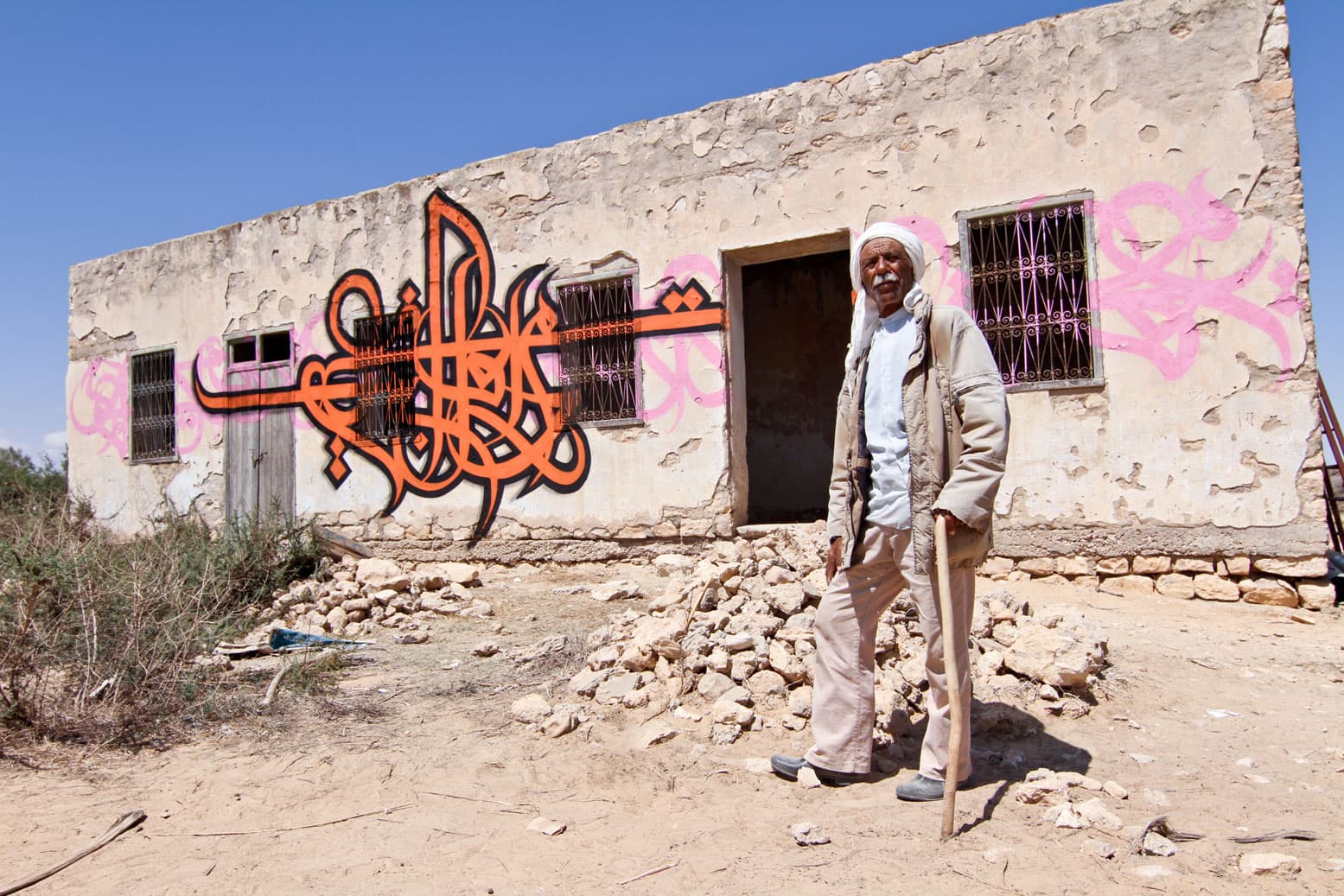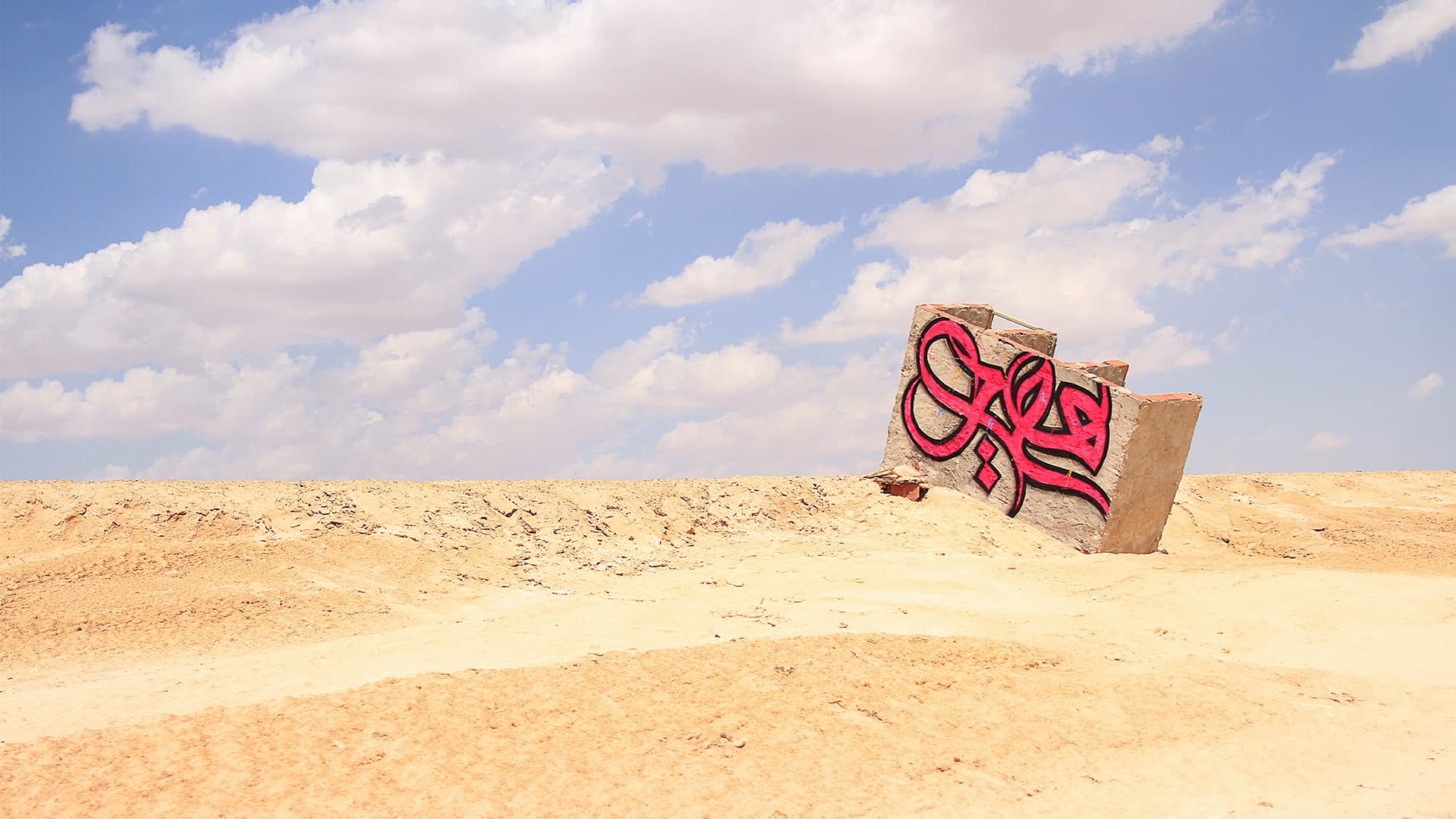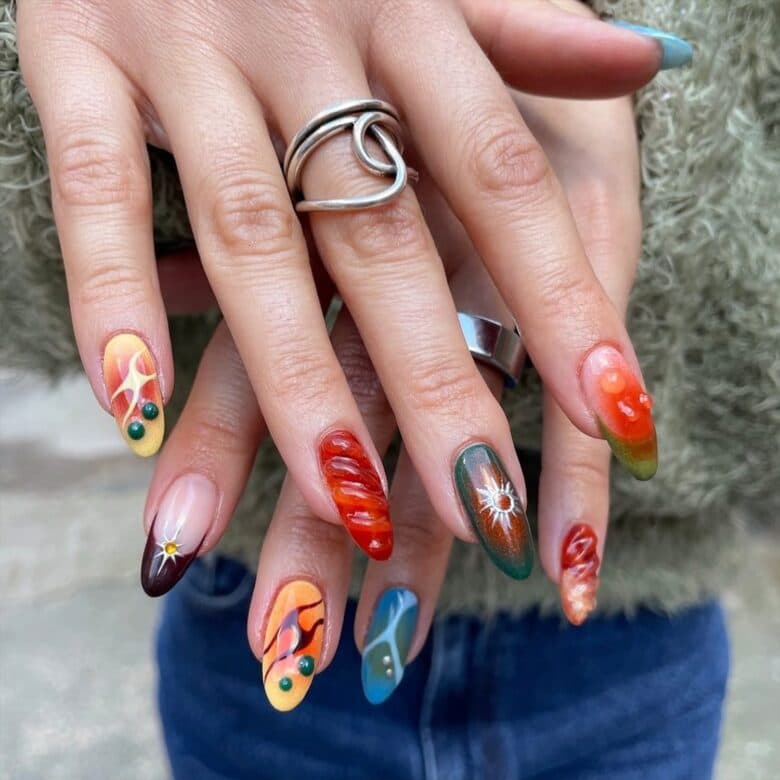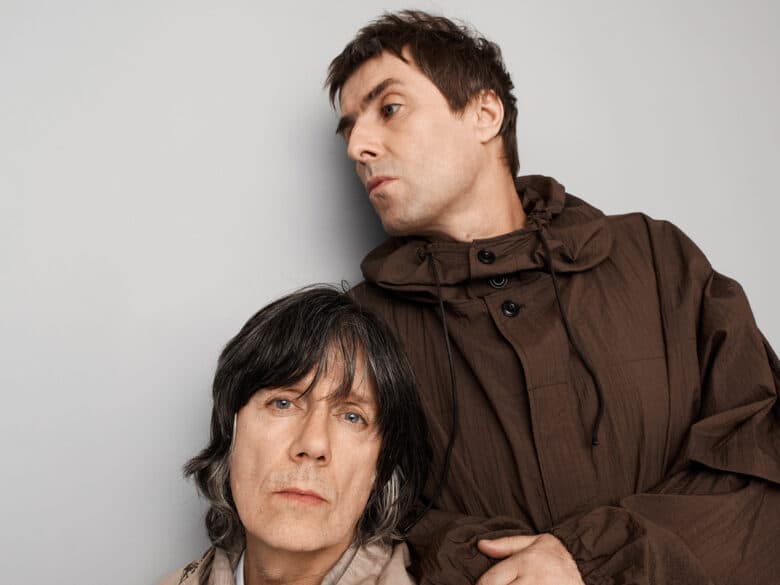eL Seed is the French-Tunisian street artist creating messages of hope
Encouraging understanding and human connection, eL Seed’s art is a beacon of hope in a world divided. The French-Tunisian artist creates street art that seamlessly brings together the contrasting traditions of ancient Arabic calligraphy and graffiti art, using them to spread messages of freedom, empowerment and love.
Best known for the striking, disruptive murals he paints in public spaces around the world – including a controversial mural painted on the minaret of a Tunisian mosque in 2012, and a 2016 piece spanning 50 buildings in Cairo’s Manshiyat Naser neighbourhood – the artist invites us to cast aside our preconceptions about language and heritage.
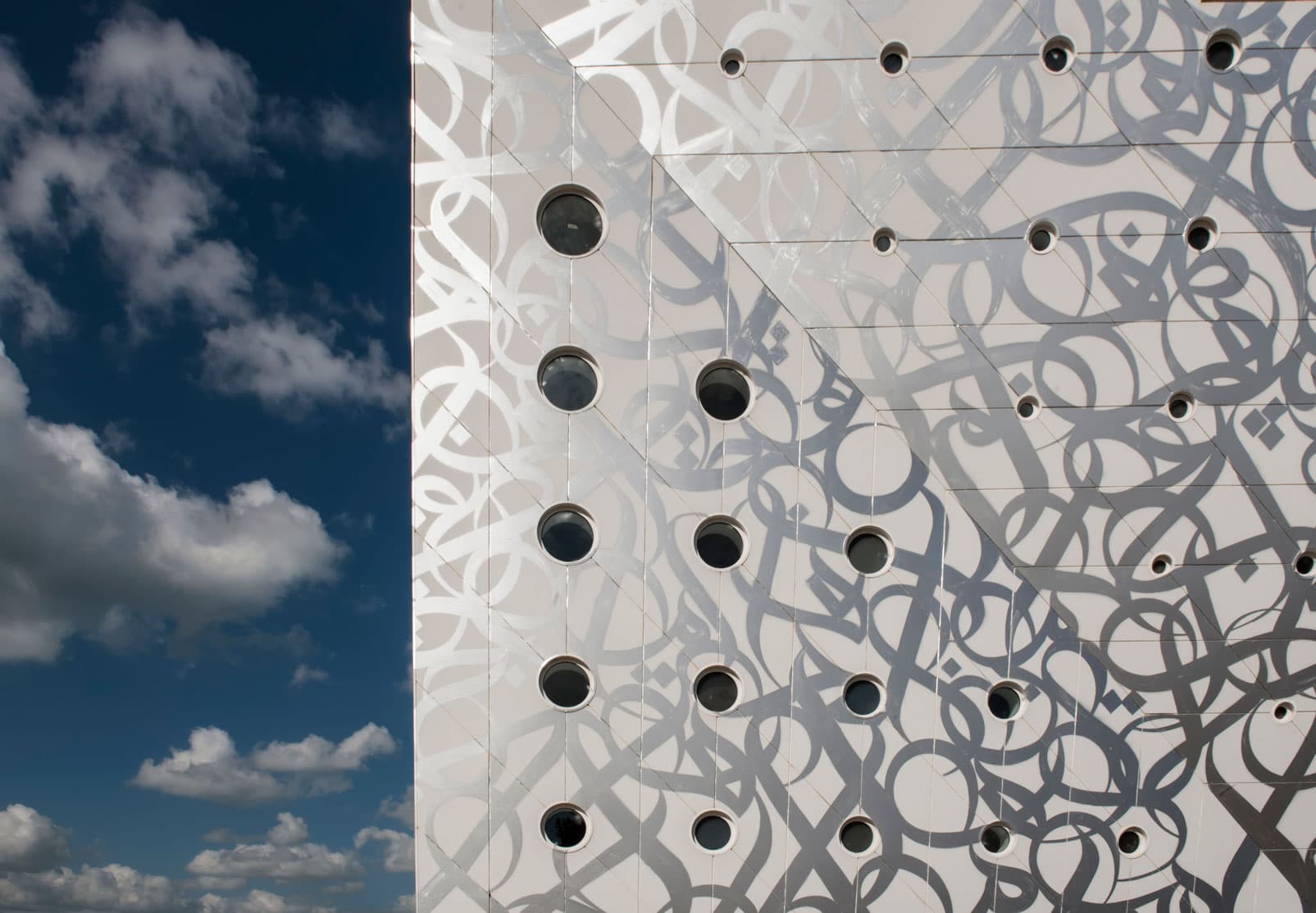
Growing up in Paris in the 1980s and 1990s, he became immersed in the culture of graffiti from a young age. But it wasn’t until his late teens that the artist reconnected with his roots in Tunisia, learning to read and write in Arabic.
Experiencing the upheaval of the 2011 Tunisian Revolution first hand, eL Seed became an important part of a movement of creatives leveraging the power of art and language to provoke cultural and political change. Since then he has painted murals across Tunisia, and in London, Toronto, Doha and Melbourne, set up a studio in Dubai and collaborated with Louis Vuitton on a collection of accessories.
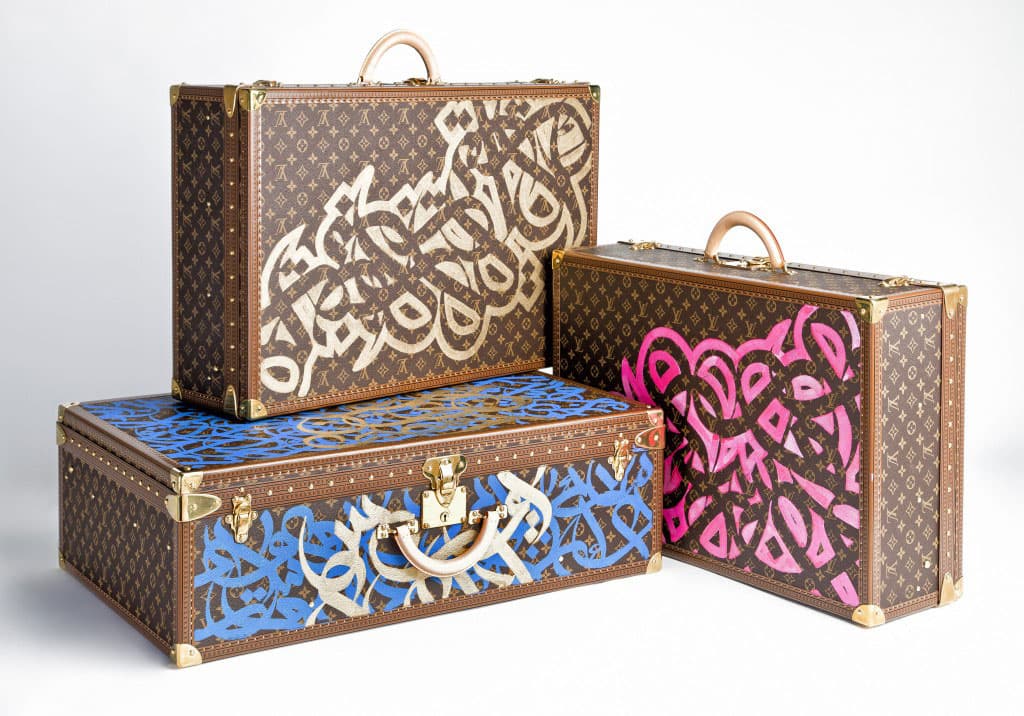
Placing the Arabic language at the heart of his work, eL Seed’s distinctive visual style is layered with meaning, directly addressing misconceptions around Arabic culture. Inviting us to unravel and play with the symbolic quality of language – ‘Tabula Rasa’, his first ever UK exhibition at London’s Lazinc gallery – presents a new approach to his work, with an unfinished, raw quality to his pieces.
We talked to him about his process of creation and the role that art can play in healing divides between cultures.
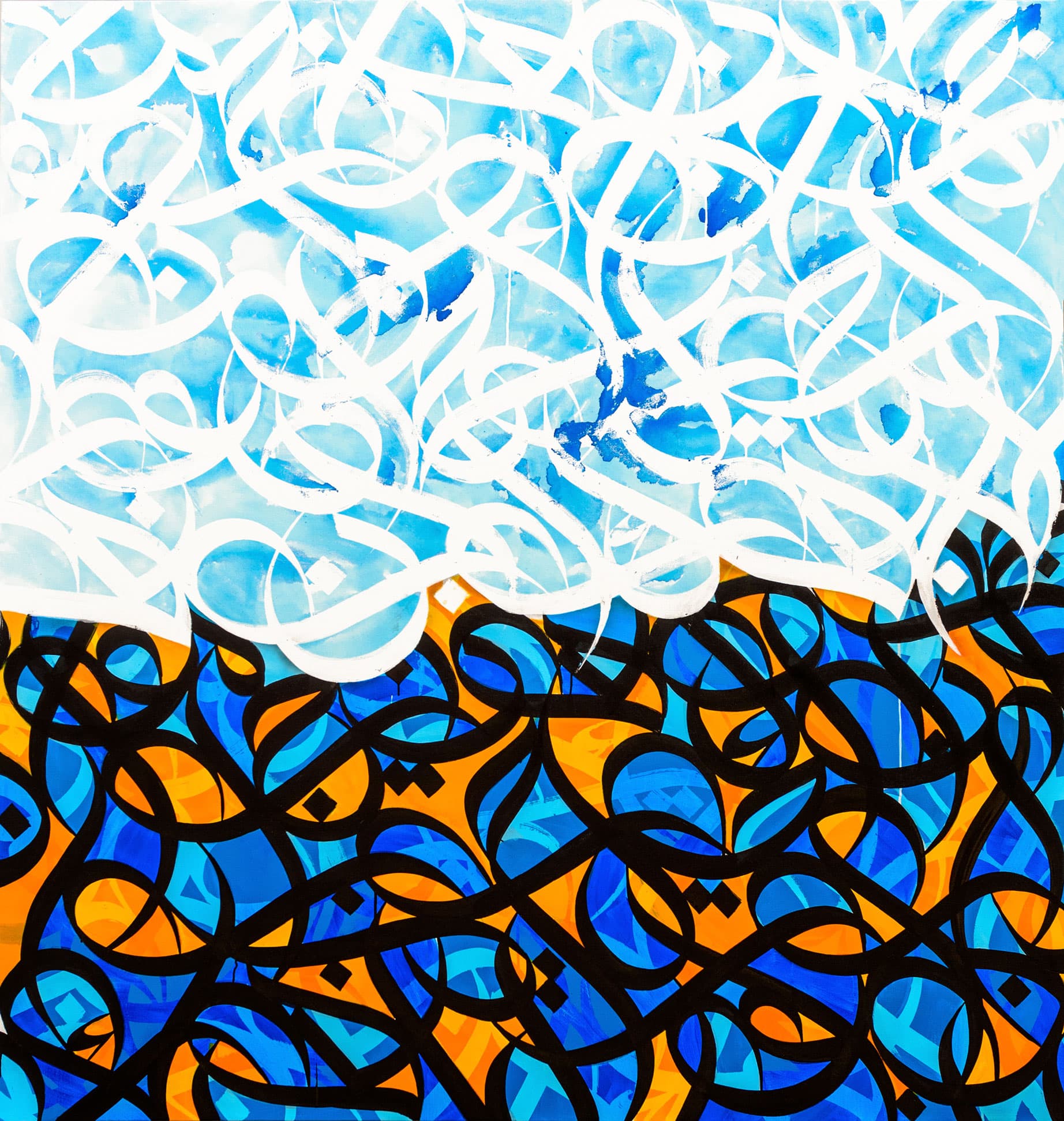
Hi eL Seed, what can we expect from Tabula Rasa?
For this exhibition, I have taken my process a step further by attempting to strip down my thought process as an artist, in an effort to access my own tabula rasa, if indeed it is possible. Expect to get a better grip of Arabic script and its beauty through a calligraphic experience.
Where did the concept originally come from?
I take the idea of tabula rasa as a starting point and implant it onto the deep-seated preconceptions that are commonly held about the Arabic script and culture. The idea of the human mind as a ‘tabula rasa’ occurred late in the 17th century, when the English philosopher John Locke in An Essay concerning human understanding (1689), argued for the mind’s initial resemblance to “white paper, void of all characters,” with “all materials of reason and knowledge” derived from experience. Essentially, he says that the human mind at birth is a complete, but a receptive, blank slate (or tabula rasa) upon which experience imprints knowledge.
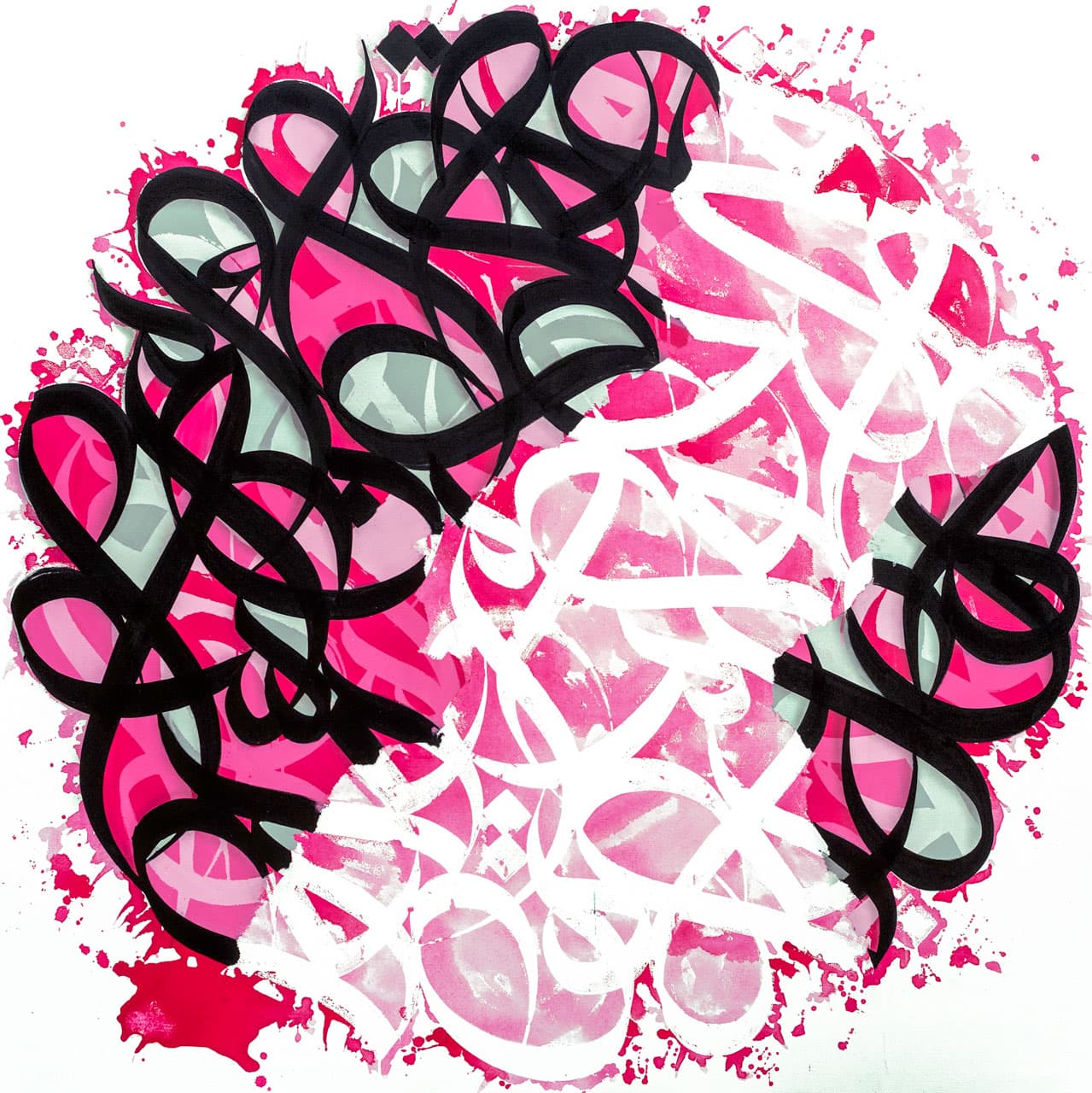
The works have an unfinished style to them which is a departure from your usual aesthetic – is your intention to leave room for the audience to add meaning?
It is an invitation for people to discover. The surface calligraphy that seems to be ripped and torn to reveal the bones and structure of the words below and the final message, materializes slowly and differently with each viewing.
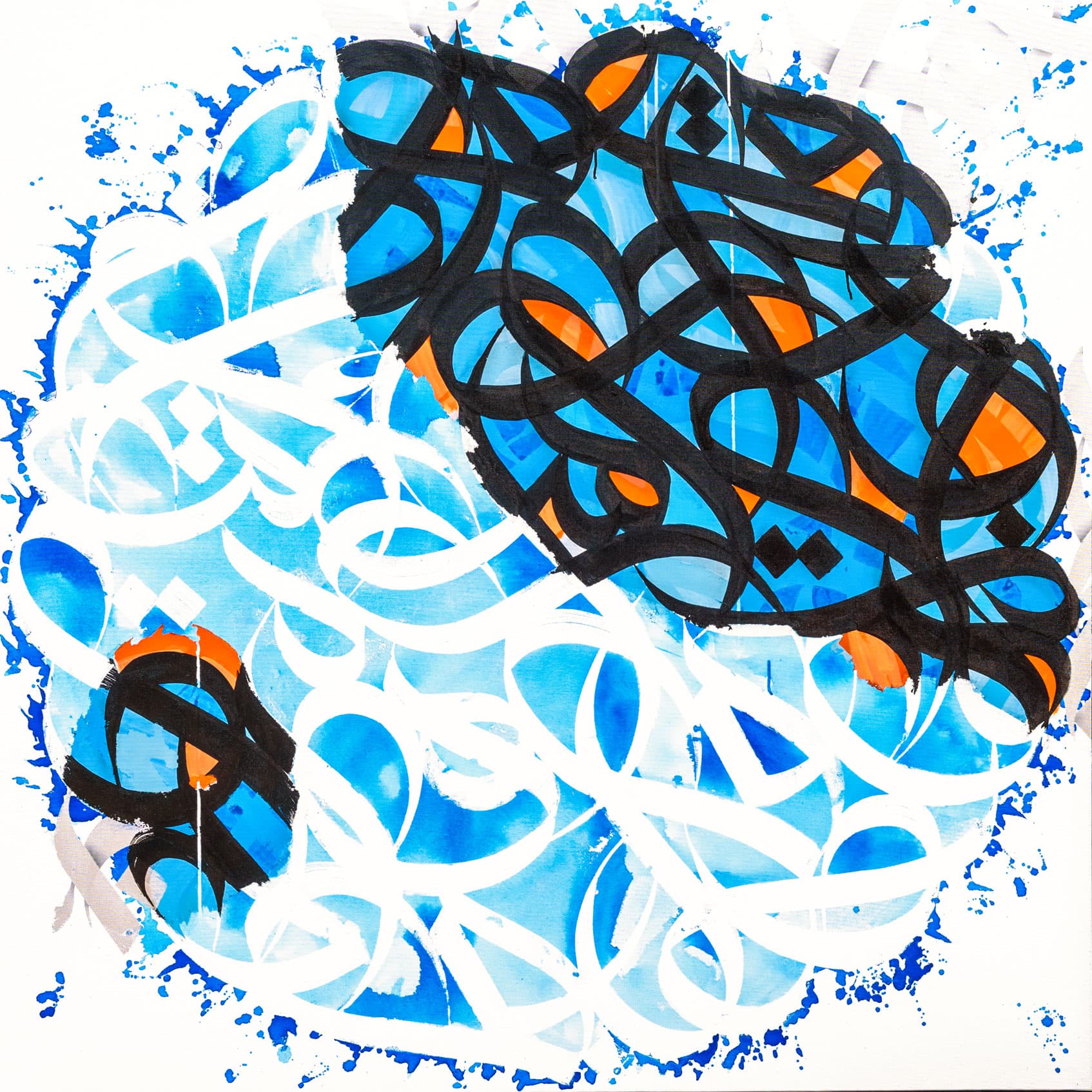
You use your work to build bridges between cultures and people, do you think art can help heal the divisive nature of our world today?
I truly believe that art is a way to open dialogue. I believe that my artwork can cut through the boundaries that we place between ourselves; whether physical, cultural or linguistic. My exhibition at Lazinc represents a new style of painting, where I am attempting to break down my thought process into layers. It also asks the audience to question the way they think and how much they have been affected by assumption or misconception.
Are there any specific experiences you’ve had where you feel your own work has helped connect or transform people?
My project ‘Perception’ inside the Cairo garbage collectors neighborhood proved to me how art can switch perception, bring light to a community and create amazing human experiences. The community used to be called ‘Zabaleen’ which the means literally the ‘Garbage people’. The project had such an amazing impact in the press that it allows to spread their real name and tell in a certain way their story and how important they are to the city of Cairo. This community has developed the most powerful recycling system in the world and most people don’t know it.
‘Perception’ was surprising to me in so many ways. I went with the intention of raising awareness about the area, but the profound effect these people had on me makes me passionate about telling their story and attempting to redress the negative perceptions that hang over the area not just within Cairo but across the region and the rest of the world.
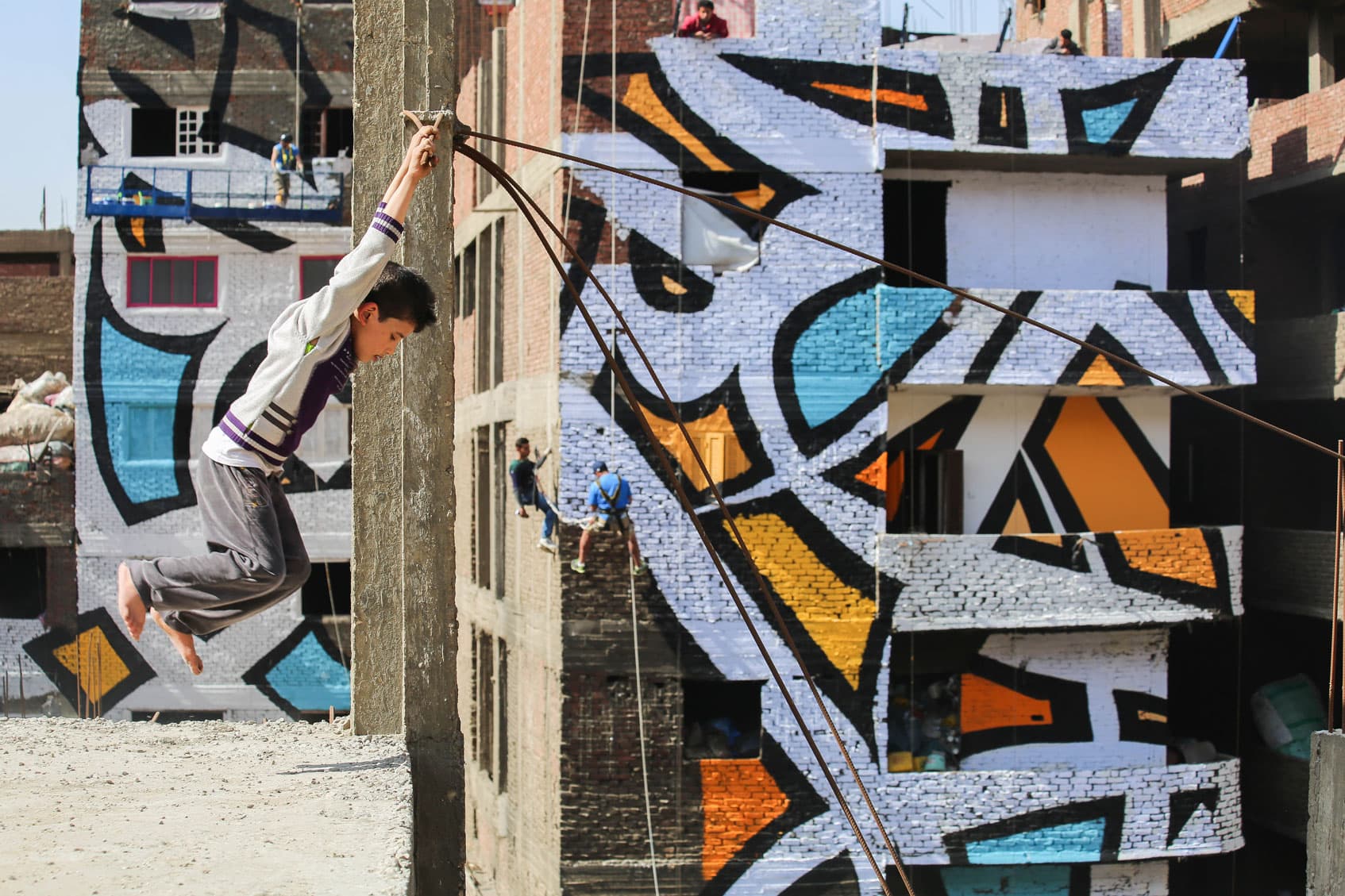
You take your work out of the gallery and into public spaces – what’s the experience like of creating something of this scale? How is the dynamic different from creating a gallery show?
It was truly the most humbling experience of my life – the people of Manshiyat Nasr in Cairo are innovative, smart, generous, welcoming and completely misunderstood. That is why I called my project Perception. I need projects in the public space to give the energy and the inspiration for my work in the studio. They are both connected.
What can the art world do to create more inclusive experiences? Is street art key to this?
Art is a way to open a dialogue as I mentioned, be it street art or any form of art in that matter. For me, personally, it is important to create human interaction whenever I make murals on public spaces or just creating a canvas on my studio. I love the experience we create around the art piece that brings people together.
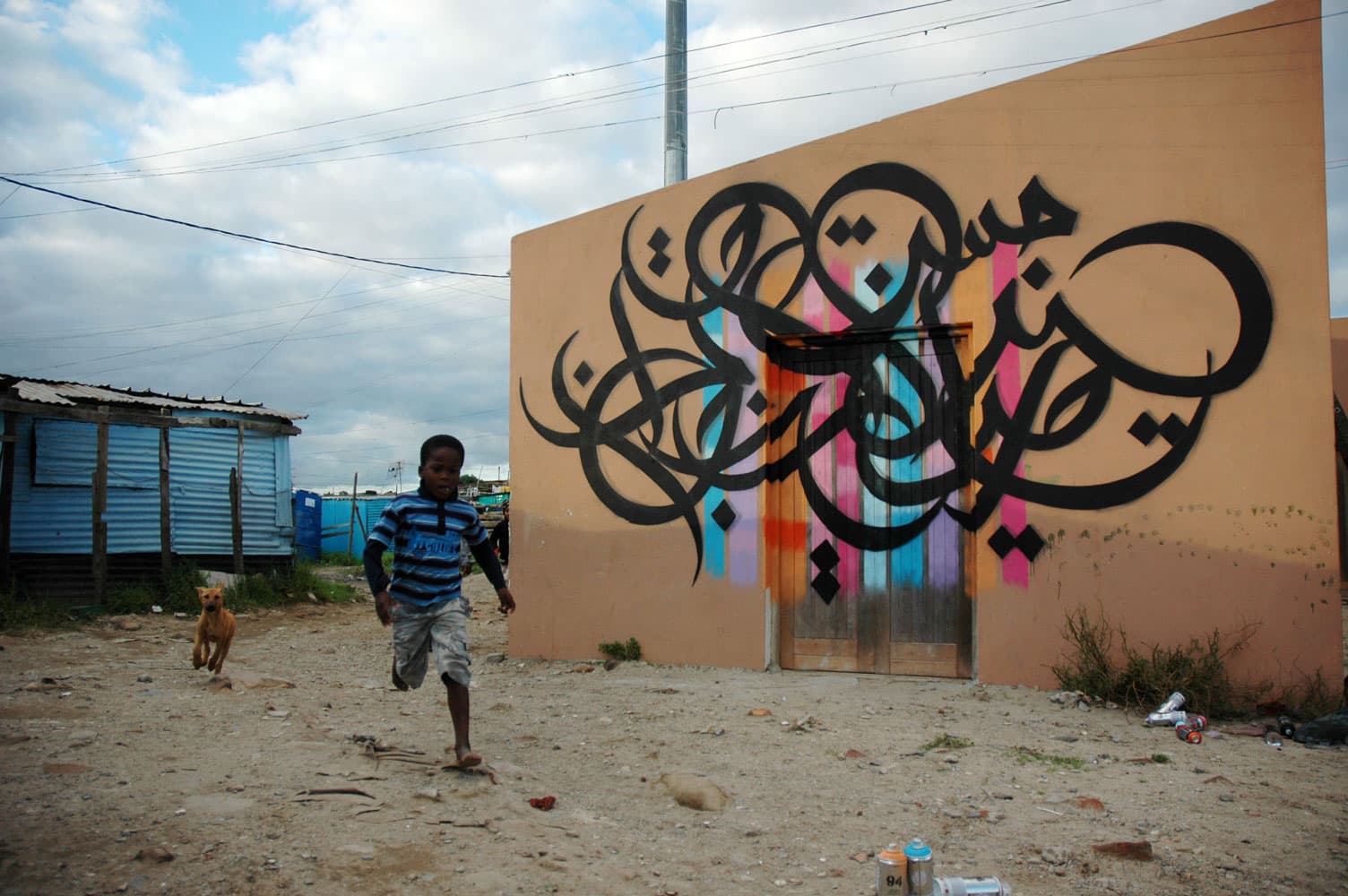
What does the use of Arabic calligraphy mean for you symbolically and personally in your work?
I perceive my artwork as a tangible expression of my search for identity, both as an individual and as an artist. My compositions, that combines the freestyle technique of street art with traditional Arabic calligraphy, reflect the tension represented in my hyphenated identity. Arabic calligraphy helped me reconcile two parts of my identities. Today, I use it as a tool to bring people, culture and generations together.
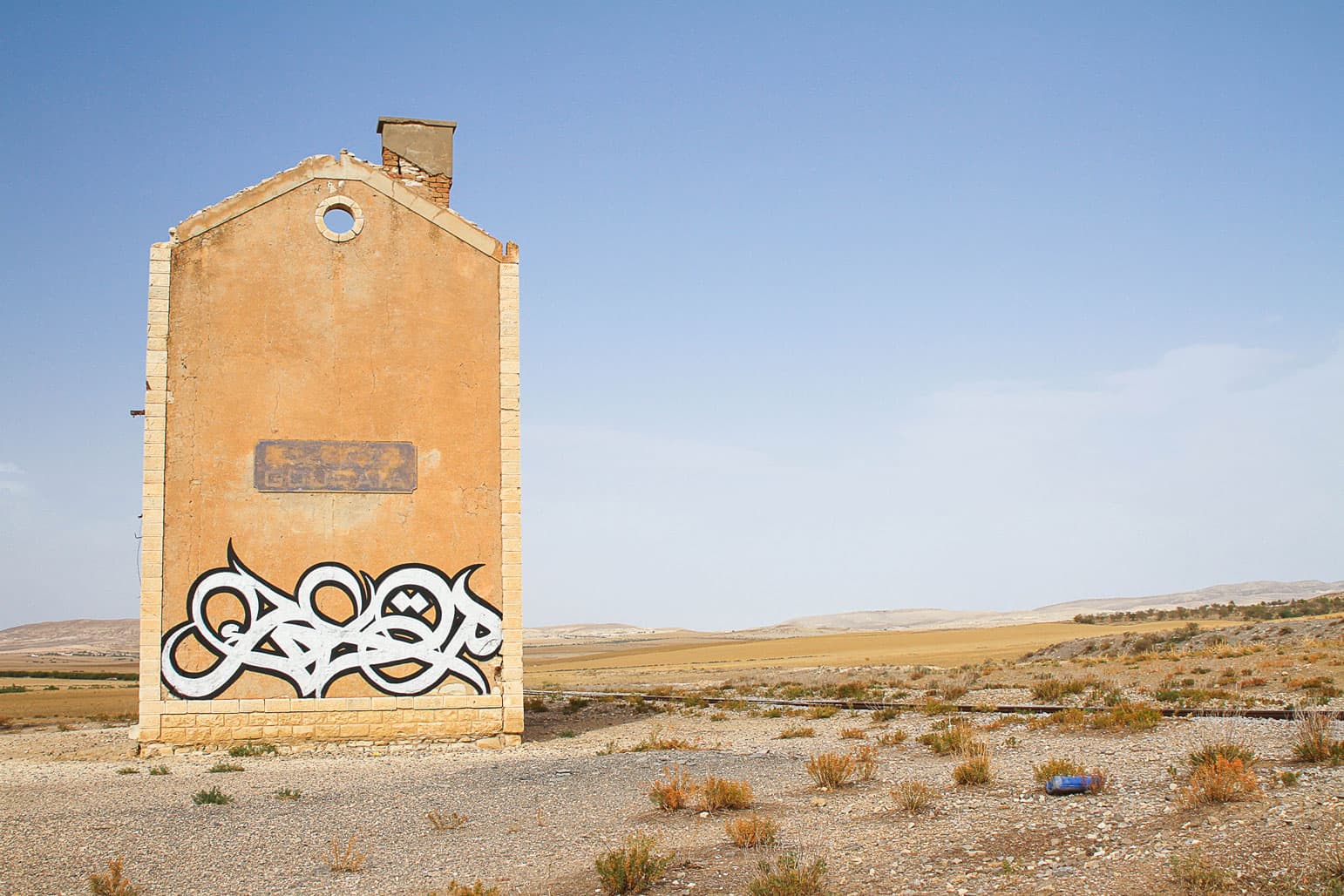
Who are some artists inspiring you right now?
Sundus Abdulhadi , Ruben Sanchez.
Thank you eL Seed!
Find out more about eL Seed’s Tabula Rasa exhibition at Lazinc Gallery in London.
Explore the art of eL Seed in the gallery below
